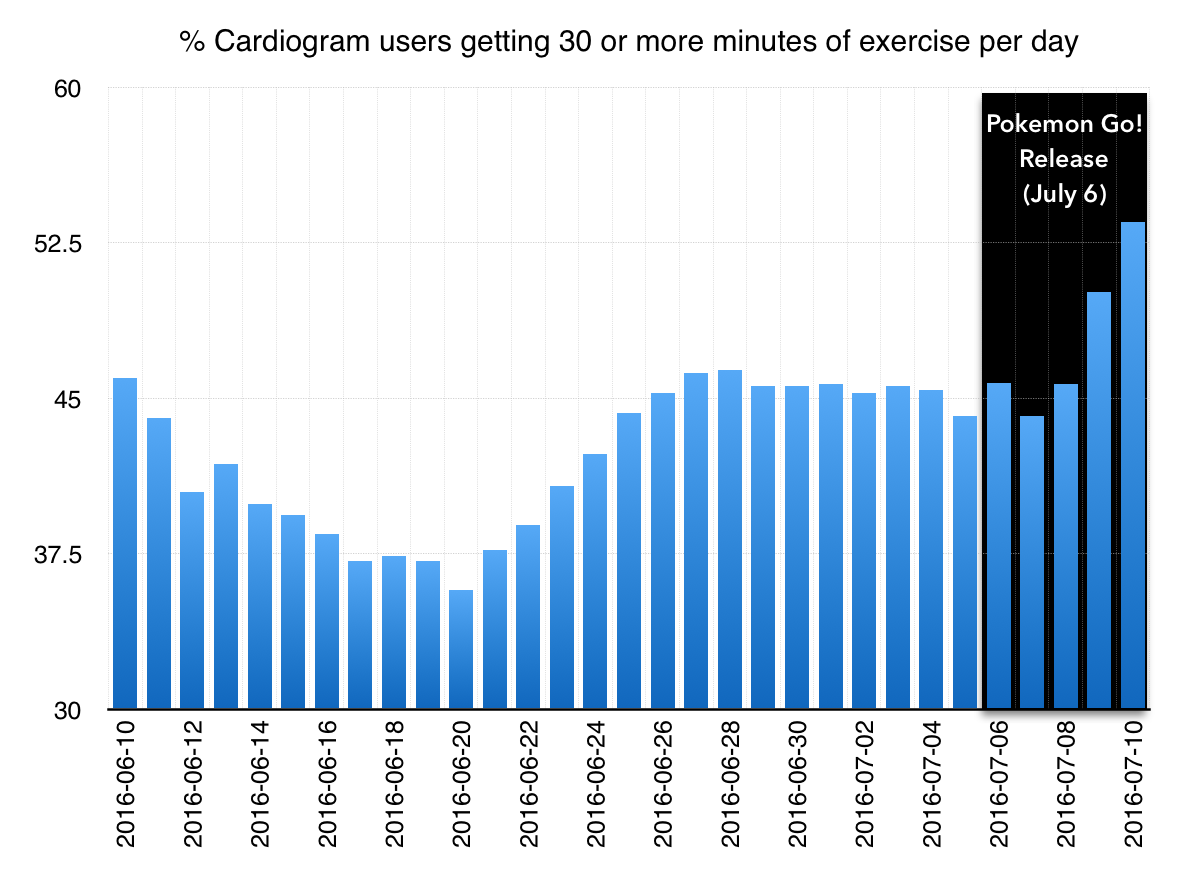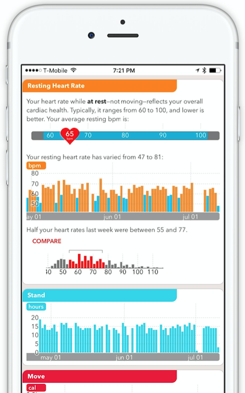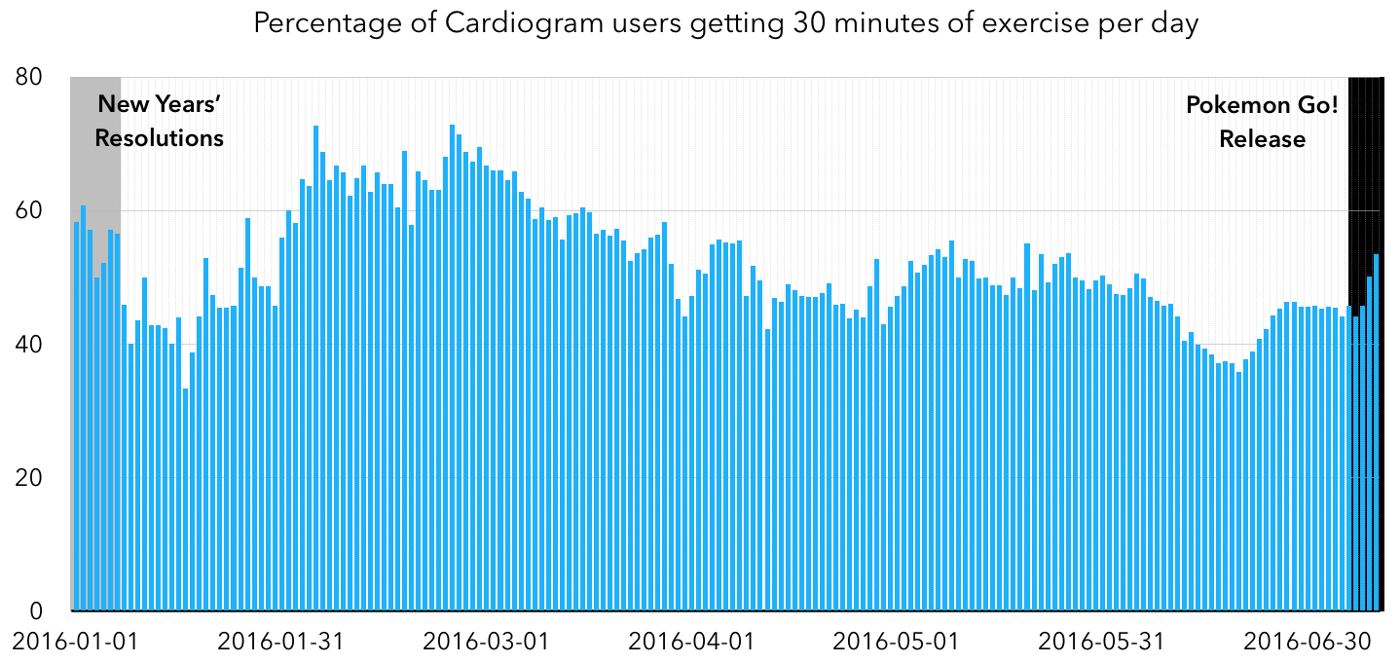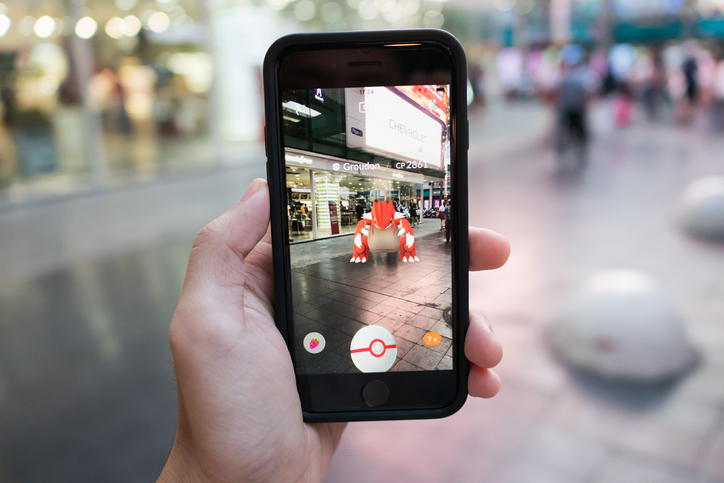If you haven’t heard of Pokémon GO by now, read Recode’s summary. It’s already bigger than Tinder, poised to become bigger than Twitter, and implicated in everything from improving mental health to enabling robbery to bringing new foot traffic to restaurants.
It’s also being suggested that Pokémon GO is getting everybody to exercise.
The American Heart Association recommends you get about 30 minutes of exercise per day, and Apple Watch helpfully tracks exercise — which it defines as anything faster than a brisk walk, using the heart rate sensor — as one of its three activity rings.
So what does the data say? We analyzed heart rate and exercise data from a sample of about 35,000 Cardiogram for Apple Watch users to find out whether the anecdotes hold up.
There was an uptick of exercise after Pokémon GO's release
Users tend to get more exercise on weekends than weekdays, so we took a rolling, 7-day average of the number of minutes of exercise per week.
During the 30 days prior to Pokémon GO’s release, anywhere from 37–46% of users got the recommended level of exercise. The day of launch (July 6) seemed like any other: about 45%. Two days later, that number climbed to 50%; today, so far, it’s at 53%. That’s a noticeable uptick!


- These trends are across Cardiogram users as a whole; we have no way of pinpointing which users installed Pokémon GO or use it actively.
- People who buy an Apple Watch are, of course, a biased sample of the population.
- People who download an Apple Watch heart rate app are themselves a biased sub-sample of wearable users.
How does this compare to seasonal variation?
If we zoom out the chart to cover all of 2016 so far, you can see how the recent uptick compares with other drivers of exercise: such as New Years Resolutions, seasonal variation (winter / summer / spring). Note that our user-base has also shifted over time (from less exercise-intensive to more mainstream audience), and we have not done a mix-adjusted analysis, so longer term shifts represent a combination of seasonality and a shift in user mix.

That said, the uptick in exercise not far from size to the one we see for New Years’ Resolutions (which seem to endure for about one week in our dataset). And given the excellent benefits exercise has shown both generally, and for specific conditions such as atrial fibrillation, that’s nothing to sneeze at.
As with many games, the true test is whether users continue to engage over time. Four days after launch is too soon to conclude, but if the effect on exercise proves to be durable, Pokémon GO may prove to be one of the largest developments in public health this year.


